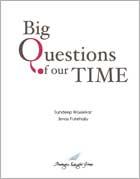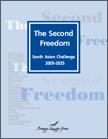Wind Energy in Bangladesh: A Promise for the Future
|
|
November, 2011
By Sanaa Arora
|
Bangladesh is in the midst of a severe energy and power supply crisis; one of the worst in South Asia. Approximately 85% of the power generated in the country is from natural gas. The growth in demand and consumption of gas has been far outstripping any increase in supply and production, leading to gas deficits, which are likely to worsen in the coming years. In order to meet the growing energy demand, the government has increased its focus on renewable energy in the past decade. Initially, the aim was to expand solar and biogas energy in the rural regions of the country. However, the government is now looking to explore the potential of wind energy, particularly along the country�€™s 700 kilometer long coastline.
Initial reports of the wind-mapping project launched by the government indicate that areas in the southern coastal region are suitable for setting up wind turbines. Wind energy can potentially generate more than 2000 megawatts of electricity in the coastal regions. The growth of wind energy in the underdeveloped, coastal areas of the country holds hope for poor, isolated communities that are not connected to the national electricity grid and who are also unlikely to receive grid connection in the near future due to the high cost of establishing infrastructure, and growing scarcity of traditional energy inputs.
Leading NGOs including Bangladesh Rural Advancement Committee (BRAC) and Grameen Shakti have installed 17 small wind generators in coastal areas. They are also conducting research to develop hybrid power stations, which are a combination of wind turbines, solar PVs and diesel generators to maximize energy output and optimize cost. Grameen Shakti has set up four of its wind generators to power cyclone shelters set up along the coast. The organization now plans to develop micro-enterprise zones around these cyclone shelters. The wind generators will provide electricity to buildings that are frequented by micro-entrepreneurs. Targeted micro-enterprises include electricity intensive industries such as electric sewing machine, ice-making and rice-husking with a special focus on women entrepreneurs. Wind energy will thus help in the growth of these small enterprises and create self-employment opportunities. By providing a reliable source of electricity, wind energy will also lead to an extension of average working hours resulting in added income and improvement in the quality of life for micro-entrepreneurs in the future.
Going ahead, wind energy also holds promise for the fishing and shrimp industries, especially for small-scale fishermen in the coastal regions of Bangladesh. Due to the scarcity of ice a significant percentage of netted fish caught by small fishermen rot. Decentralized electricity from wind, used in ice as well as salt production, could aid fish preservation and hence, increase incomes of fishermen and intermediary vendors. Further, it is not possible to apply modern methods of shrimp cultivation in Bangladesh due to shortage of electricity. With the influx of electricity, application of semi-intensive methods of shrimp and fish cultivation can increase production by 25-30 times, resulting in the creation of new jobs in processing industries. Grameen Shakti has already started providing electricity to fish and prawn farms in Cox Bazaar, an important fishing port.
The Bangladesh Power Development Board has estimated that wind energy can contribute to 10% of the energy needs of the country. The Board has also calculated the cost to generate one kilowatt hour of power (kWh) from wind energy to be about half the cost of generating an equivalent unit of power from solar energy. The expansion of the potential of wind energy will be crucial in order for Bangladesh to achieve its national vision of providing electricity to all of its population by 2020. However, in order for targeted poor communities to enjoy the benefits of access to electricity, there may be a need for setting up of vocational training programs for rural and urban poor micro-entrepreneurs.
Bangladesh is in the midst of setting up a Sustainable Energy Development Authority (SEDA). If the government is successful in attracting foreign investment and technology and in realizing the potential of the wind energy sector, it could bring social and economic benefits to people in underdeveloped coastal areas who do not enjoy access to electricity. However, since the coastal regions of Bangladesh are prone to natural disasters, small-scale wind turbines could be at risk and may require additional maintenance. This could be an impediment in the expansion of small-scale wind energy in the country.
Related Publications
-
.jpg&maxw=50)
Big Questions of Our time: The World Speaks, 2016
Download:Big Questions of Our time: The World Speaks _Full Report
-

-

Second Freedom South Asian Challenge 2005-2025, 2005
read more
Download:Second Freedom South Asian Challenge 2005-2025 Full Report
Related latest News
Related Conferences Reports
-

Global Challenges Conference, October 2016
Download:Global Challenges Conference Report
-

Conference on Responsibility to the Future: Business, Peace and Sustainability, June, 2008
Download:Global Security and Economy: Emerging Issues


